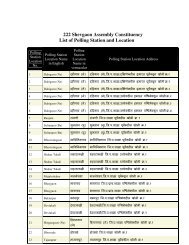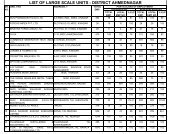1. INTRODUCTION
1. INTRODUCTION
1. INTRODUCTION
You also want an ePaper? Increase the reach of your titles
YUMPU automatically turns print PDFs into web optimized ePapers that Google loves.
· Climb to high ground and stay there. Avoid walking through any floodwaters. If it is<br />
moving swiftly, even shallow water can sweep you off your feet.<br />
· Do not allow children to play in flood waters<br />
If In A vehicle:<br />
· If travelling towards a flooded area, turn around and go another way.<br />
· If the vehicle stalls, abandon it immediately on the side of the road and climb to higher<br />
ground. Many deaths have resulted from attempts to move stalled vehicles.<br />
· If trapped in a vehicle that is going under water, get out of the submerged vehicle by<br />
opening a window or door and swimming to safety.<br />
3.4 After a Flood<br />
· Flood dangers do not end when the water begins to recede. Listen to a radio or television<br />
and don't return home until authorities indicate it is safe to do so.<br />
· When entering buildings, use extreme caution.<br />
· Examine walls, floors, doors, and windows to make sure that the building is not in danger<br />
of collapsing.<br />
· Watch out for animals, especially poisonous snakes, that may have got into the house with<br />
the flood waters. Use a stick to poke through debris.<br />
· Watch for loose plaster and ceilings that could fall.<br />
· Throw away food that has come in contact with flood waters.<br />
· Remove water from the house to avoid structural damage.<br />
4 Epidemics :<br />
[In addition to what has been listed under family preparedness as a generic response,<br />
epidemics demand specific preparedness and responses. Given below are the preparedness<br />
measures and responses which are specific to epidemics ].<br />
Different epidemics will have different etymology and consequences. Water-borne, vectorborne<br />
or viral epidemics will need different levels of preparedness and response. Some<br />
epidemics may have a quick onset whereas others may take a longer time to spread. The<br />
public health department is primarily concerned with issuing the epidemic warning and<br />
declaring the areas as epidemic prone.<br />
4.1 After the warning<br />
· Understand the specific nature of the epidemic including the causation, nature of spread,<br />
symptoms and medication<br />
· Understand the specific precautionary and preventive measures to be taken by the family<br />
members.<br />
· Ensure intake of safe water and food. Take extra measures to protect food stocks.<br />
C:\DOCUME~1\ADMINI~1\LOCALS~1\Temp\C.Lotus.Notes.DataRevised Grain Bank


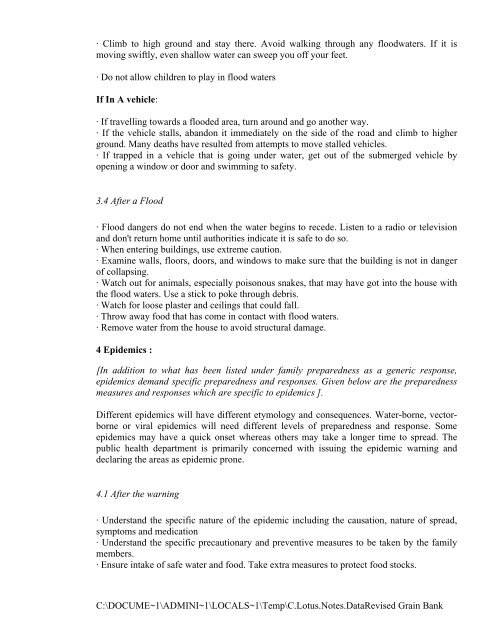
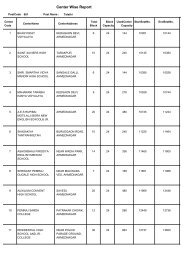
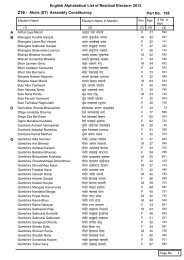
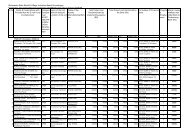
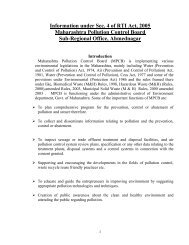
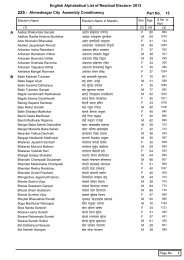

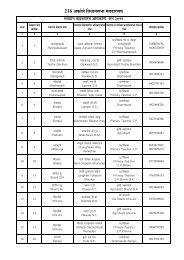
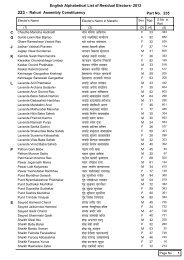
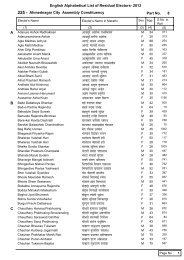
![216 - +ÃŪúÃä]äõ ĶÃŪúià ĶÃÃ>ðŪúÃÄ«Ã +ÃŪúÃä]äõ EÅÃÄÄ·ÃĪÃÃ](https://img.yumpu.com/36478022/1/184x260/216-aaaaaaau-aaaaia-aaaaaaaaa-aaaaaaau-eaaaaaaaa.jpg?quality=85)

